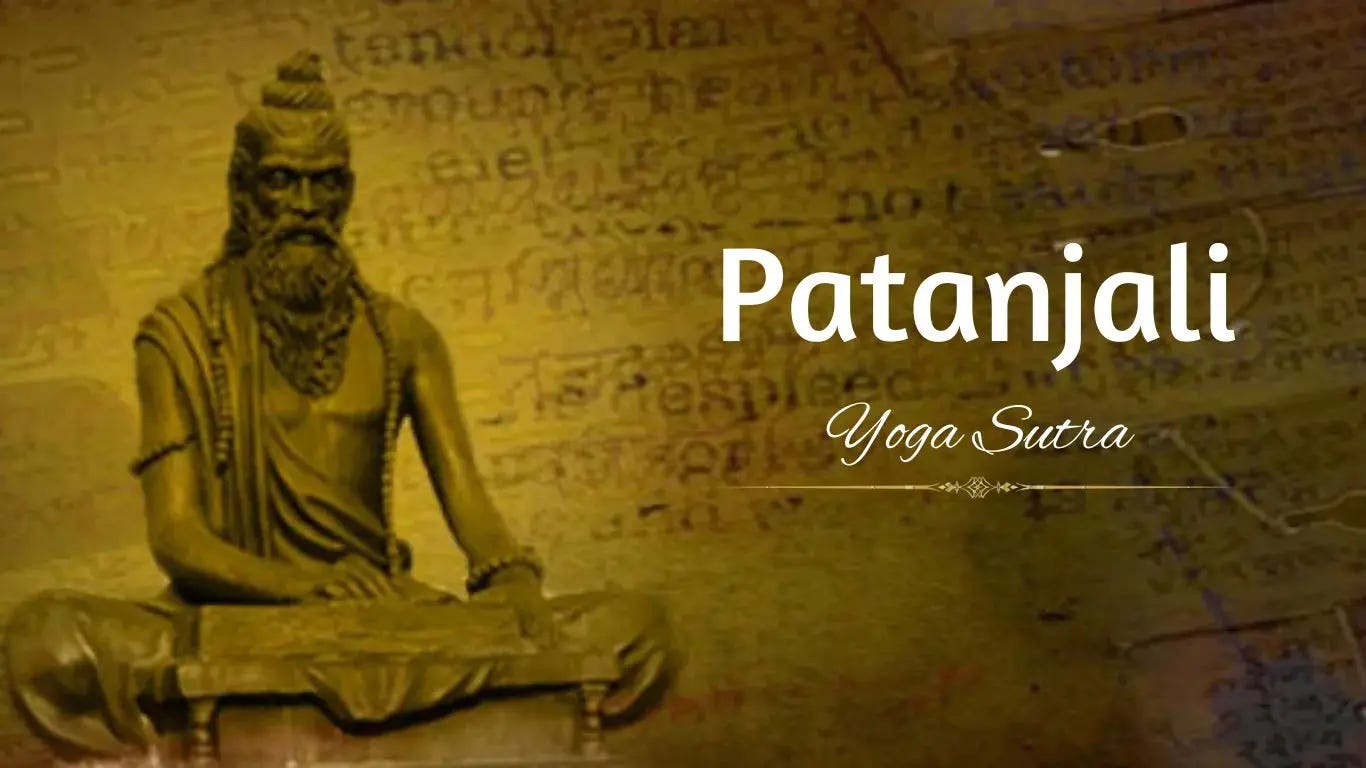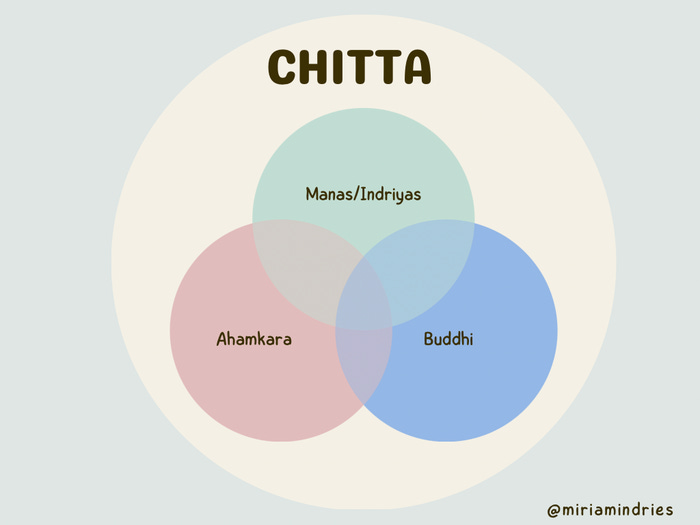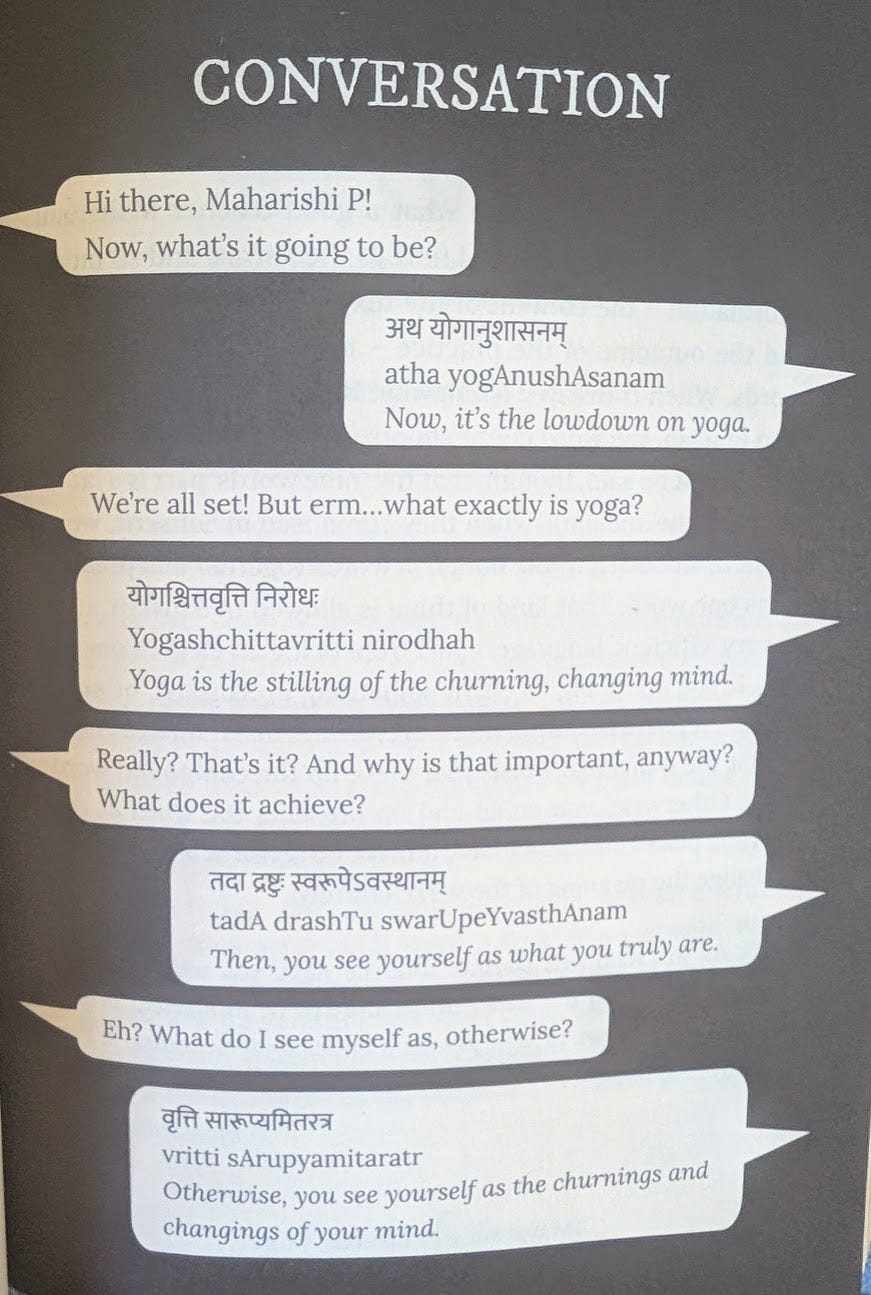And now, Yoga
Q: How has an ancient text guided your present day?
Kinnari’s Dialogue
We've just crossed the midpoint of 2025. As I realized that last week, I wondered which area I'd been able to make the biggest change in this year. Is it Parenting? Career @ Google? Health? Marriage? The answer was instant. It was my internal state that feels the most changed. My inner state of being is what I have been most focused on. I'm not at the point where people in my life would recognize a difference yet but I can feel the small 1-2 degree shifts internally.
It started with increasing my meditation practice to two twenty-minute sessions in January as I talked about in “A steadfast approach to 2025”. When I fell off that practice after a trip to India in March I decided to take a more structured approach. I took the Inner Engineering course offered by Isha Yoga institute in April to learn the shambhavi mahamudra kriya - a yogic practice that combines breathwork and meditation to enhance focus, mental clarity, and overall well-being. I've been doing that practice every day since - with a few exceptions. On the days that I haven't made time to do it, I've missed it and longed to return to the mat and to my inner self.
Attuned to this internal space, I've been drawn towards learning more about Yoga, especially the philosophy of it. I finally started my study of a book I’ve had on my shelf for over ten years - The Yoga Sutras of Patanjali - a Vedic spiritual text that has been around for over 2000 years. Patanjali, who is known as the father of Yoga did not invent Yoga - it already existed in various different forms before. But it was Patanjali that put it together into one system - the format known as the Yoga Sutras. There are many books that have translated and attempted to decipher The Yoga Sutras as laid out by Patanjali and I've been reading a couple in parallel as I'm uncovering something new in each one.
Patanjali has got one of the most epic starts to a book. So simple and short that I completely missed the depth the first time around.
Atha yoga anushasanam (Sutra 1)
loosely translated as "And now, the teachings of yoga."
For me the "And now.. " feels like an invitation, a calling. Now, that you are here - put aside the external world, the relationships to others, all that crap that doesn't really matter...forget about it. "And now.. Yoga" And now, it's time to bring your attention to the union of the mind, body and soul. And now, it's time to learn how to take control of the senses and stop the fluctuations of the mind. And now, we begin instructions on how to merge the mind with our inner being.
Yogas citta vrtti nirodhah (Sutra 2)
Yoga is the restraint of the modifications of the mind.
Patanjali wastes no time. He gets right to the purpose of Yoga and why we must practice it. Yoga is the cessation of the fluctuations of the mind. If we can control our mind we can control everything.
Citta is the sum total of the mind. Within citta (mind) are three levels - the ego or ‘Ahamkara’ (that ‘I’ feeling), the intellect or ‘Buddhi’ and the desiring part of the mind that gets attracted to outside things through our senses or ‘Manas’.
When I first sat down to write this post it was peaceful and quiet. A few minutes into it my husband and my older daughter walked into the house. At that moment, I heard my daughter (through my senses) ask my husband if she could watch TV. My intellect stepped in. "Why is she asking about watching TV anytime there's some downtime? …Maybe it's okay for her to watch TV considering she spent all morning at a swim meet." My ego then decided that I should make her lunch and have her eat first. All of these three things happen one at a time but so quickly that we seldom can distinguish between them. These fluctuations - thoughts in my mind - give rise to the effort for me to get up and go make her lunch. The want was created and unless I fulfill it, my mind will not go back to its peaceful condition.
The natural condition of the mind is a peaceful state. But these "vrttis" or mental chatter disturb the peace.
"The entire outside world is based on your thoughts and mental attitude. The entire world is your projection. Your values may change within a fraction of a second... If we remember that we won't put so much stress on outward things.
…As the mind, so the person; bondage and liberation are in your own mind. If you feel bound, you are bound. If you feel liberated, you are liberated. Things outside neither bind nor liberate you; only your attitude towards them does that.
…If you can have control over your thought forms and change them as you want, you are not bound by the outside world. "
- Swami Satchidananda
I've been experimenting with this a bit. There are moments in my day now when I am more conscious, where I am more aware of what's going on in my mind…watching each thought and emotion as it arises, and the meaning my mind gives it. At these moments, the mind again tries to jump in and take control of the meaning. How about I shift the meaning to this so then I can be joyful? But then I remind myself that even that is the mind wanting to gain control again.
And after these moments of being the watcher I go back to the unconscious ways that I have known my entire life. I start the practice and fall off again. But as I dive deeper into the sutras I am finding out that there lies an answer in these pages to all of these predicaments. There are tools and practices to use our breath and our bodies to gain control of our minds and 99.9% of of us are not aware of these.
I am slowly inch by inch moving towards a knowing of what our real ‘work’ here is. I will leave you with the words of Ram Das who articulates this in a beautiful way; and a song with those words because it has brought me peace and stillness and we all need more of that in these times.
And in this very lifetime
You can know it
Right now
The real work you have to do
Is in the privacy of your own heart
All of the external forms are lovely
But the real work
Is your inner connection
If you're quiet when you meditate
If you truly open your heart
Just quiet your mind
Open your heart
Quiet the mind, open the heart
How do you quiet the mind? You meditate
How do you open the heart?
You start to love that which you can love
And just keep expanding it
Mitali’s Dialogue
I have written often about how my mind leads me astray (Hello anxiety, my old friend, Don't just do something, sit there). I have learnt over the years to not give too much importance to the thoughts in my mind but it still trips me up. A few weeks ago when Kinnari shared a draft of her post on the book The Yoga Sutras by Patanjali, I realized that I hadn't read this ancient Indian text and was intrigued by her notes. I remembered that I had picked up a book for my kids on our last trip to India called “The Yoga Sutras For Children” by Roopa Pai. I decided to open up the book and start reading it and was immediately hooked. The author described the alternative “click-bait” title for the book as “Maharishi P’s Ultimate Handbook for Mind Control”. How had I not read this book before?!
Over the past few decades yoga has become popularly known as an exercise mode in the West thanks to the prevalence of yoga studios and classes. I thought “yoga” (which literally means “to join” or “to link”) was about the union of the body and the mind through the practice of asanas. Years of taking yoga classes has taught me how the practice of yoga calms my mind. But this book is giving me a broader perspective on yoga. The word “sutra” means “thread”. In the context of this book, the author describes The Yoga Sutras as “a string of clearly laid-out steps to help us achieve control of our minds, creating in the process a strong, unbreakable link with our highest selves, so that we become the very, very best version of ourselves.”
As I started reading it, I realized how much I could learn from following the sutras and practices in the book. The book is composed of 195 sutras, each with an average length of six words so it's a slim text but interpreting and understanding the cryptic words requires patience and reflection. Here is an example of the interpretation of the first 4 sutras from the book -
Here are some of my notes from reading and understanding the first two sutras -
Yoga Sutra 1: atha yogAnushAsanam
There is no better time to start the practice of Yoga than now - Yoga being the name of a particular school of Indian philosophy.
“Now” is the first step of a disciplined life. It is the opposite of procrastination, laziness, lack of commitment, unwillingness to do hard things.
Yoga Sutra 2: yogashchittavritti nirodhah
“Chitta” means mind but in Yoga the mind is made up of three separate layers
“Manas” which is the data collecting lower mind
“Buddhi” which is the decision making higher mind, and
“Ahamkara” which is the mind that thinks of itself as ‘I’, separate from everyone and everything else, aka ‘ego’.
These three layers work together through
Five ‘knowledge-gathering’ senses - sight, hearing, smell, taste and touch - that feed data from the outer word to the Manas
Manas processes this data and presents it to Buddhi, which makes a decision and sends Manas the order to execute it through the five ‘action-performing’ senses and body parts - speaking (tongue), grasping (hands), moving (legs), eliminating (excretory organs) and procreating (reproductive organs).
“Vritti” means changes, movements which are all the thoughts, idea and emotions that are generated by the three layers of the chitta (mind)
An analogy often used is to think of the chitta as a lake and the vrittis as an unending series of waves rising in it.
Every time we react to a thought-wave or a desire-wave - with joy, fear, anger, love, hate - the reaction creates its own series of waves, hence the noise and continuous chaos in our chitta lake.
“Nirodhah” means stopping or cessation. If you sat at the edge of the chitta lake and observed the waves without constantly reacting to them, the waves would stop controlling you. You would take away the power you have given them and the number of waves would fall dramatically.
The Yoga Sutras give us recommendations for not just reducing the waves but having them cease entirely. It might take several lifetimes to get to that state though. 🙂
Last week after reading a few sutras, I took the time to observe my thoughts and emotions and tried to practice not getting caught up in reacting to them - which to be true has been a constant practice over the past decade. When I found my two sons calling each other names last week, I paused before intervening, recognizing that I was getting triggered from their constant bickering. However when my husband made a snarky comment instead of expressing appreciation after I had run an errand for him, I failed to pause and responded with my own hurtful comment. When I stepped away to cool off, I recognized that I had just succumbed to an emotion-wave. I didn't beat myself up about failing at the practice but realized that “that” is the work - to catch myself and get back on the train again after falling off. It is impossible to expect myself to get this right every single time.
I am planning to spend the next few months reading and reflecting on the book - thanks to Kinnari’s recommendation. I hope to share more of my learnings as I go through it.




